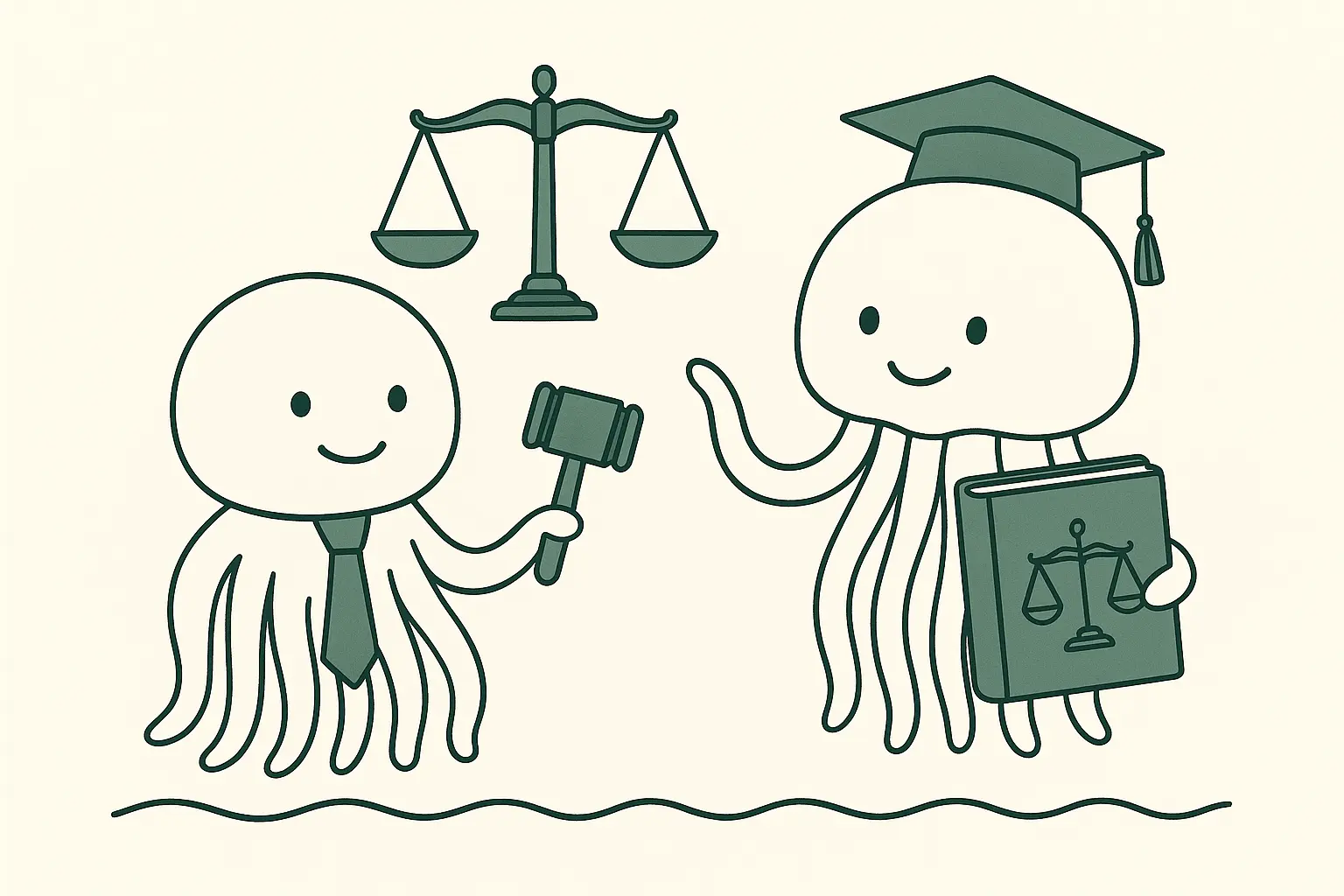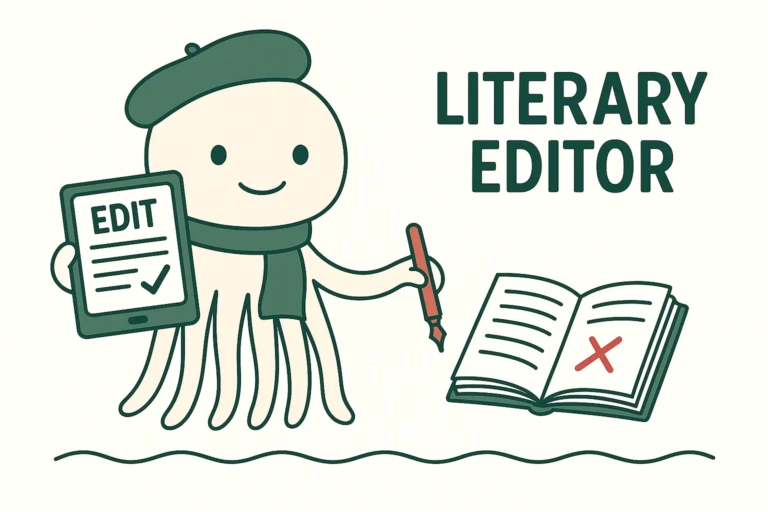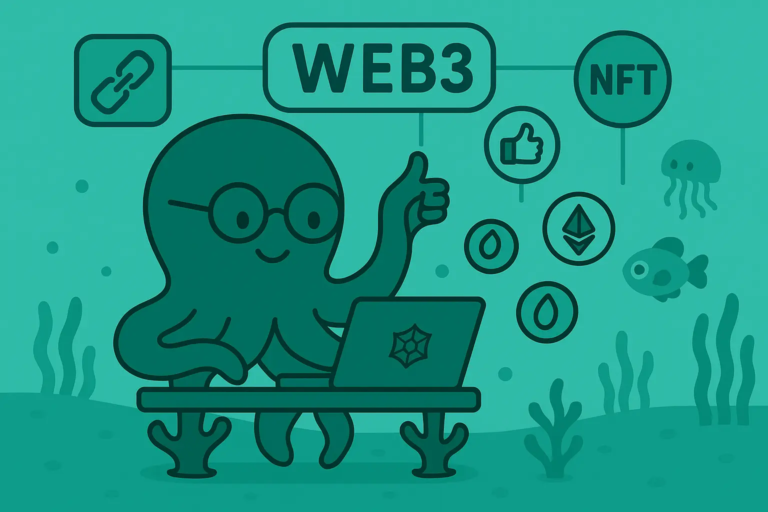10 ChatGPT Prompts for Legal Professionals
Legal work is complex, detailed, and time-consuming.
Drafting documents, analyzing cases, and keeping up with legal updates can eat up your day.
But ChatGPT can help—when you use it right.
With carefully written prompts, you can speed up research, improve your writing, and save hours on repetitive tasks.
This post gives you 10 practical ChatGPT prompts for legal professionals.
1. Summarize a Legal Case in Simple Language
#CONTEXT:
You’ve read a long case and need a clear summary for a colleague, client, or quick reference.
#GOAL:
Summarize the key facts, judgment, and legal significance of a case.
#RESPONSE GUIDELINES:
Break down the case into facts, issue, judgment, and reasoning.
Use simple, professional language.
Keep it under 300 words.
Use a [insert tone] tone.
Explain the relevance to [insert practice area].
#OUTPUT:
A short, clear case summary.ChatGPT Output
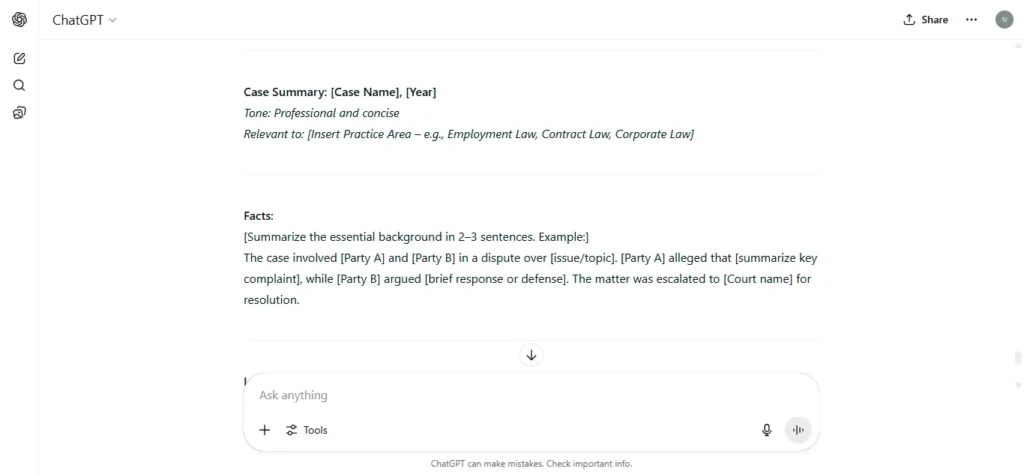
2. Draft a Legal Memorandum
#CONTEXT:
You’re writing a legal memo for a client or internal team and want help organizing the content.
#GOAL:
Generate a structured legal memorandum based on provided facts and legal questions.
#RESPONSE GUIDELINES:
Ask for the issue, jurisdiction, and facts.
Use IRAC format (Issue, Rule, Application, Conclusion).
Maintain a [insert tone] voice.
Include relevant authorities or references.
Use headings for clarity.
#OUTPUT:
A formatted legal memorandum draft.3. Create a First Draft of a Contract Clause
#CONTEXT:
You’re drafting or revising a clause in a legal agreement and want a starting point.
#GOAL:
Generate a basic version of a specific contract clause.
#RESPONSE GUIDELINES:
Specify the type of clause (e.g., non-compete, termination, confidentiality).
Use legally sound and clear language.
Adapt to [insert jurisdiction] if needed.
Maintain a [insert tone] tone.
Include optional variations or alternatives.
#OUTPUT:
A draft contract clause ready for review.ChatGPT Output
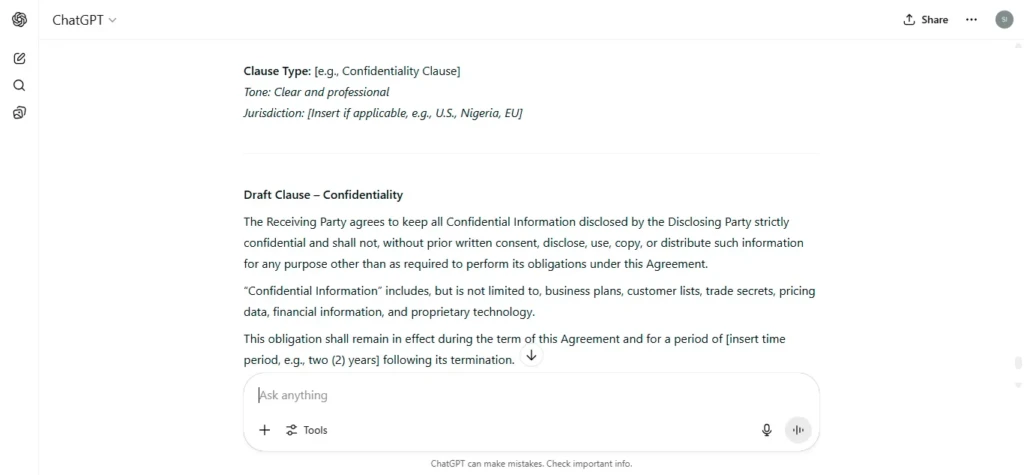
4. Convert Legal Jargon into Client-Friendly Language
#CONTEXT:
You have a legal document or explanation that needs to be rewritten in plain English for a client.
#GOAL:
Simplify legal text without losing accuracy.
#RESPONSE GUIDELINES:
Maintain the legal meaning.
Use plain English that a [insert audience] can understand.
Shorten long sentences.
Keep tone [insert tone] and respectful.
Flag any parts that may need clarification.
#OUTPUT:
A simplified, client-friendly explanation.5. Summarize Key Points from a Legal Article or Ruling
#CONTEXT:
You’re reading a long article, statute, or court ruling and want to capture the key points quickly.
#GOAL:
Extract a bullet-point summary of the main takeaways.
#RESPONSE GUIDELINES:
Keep it to 5–7 bullet points.
Use plain, clear legal language.
Focus on implications for [insert legal field].
Use a [insert tone] tone.
Avoid repetition.
#OUTPUT:
A bullet-point summary of key points.ChatGPT Output
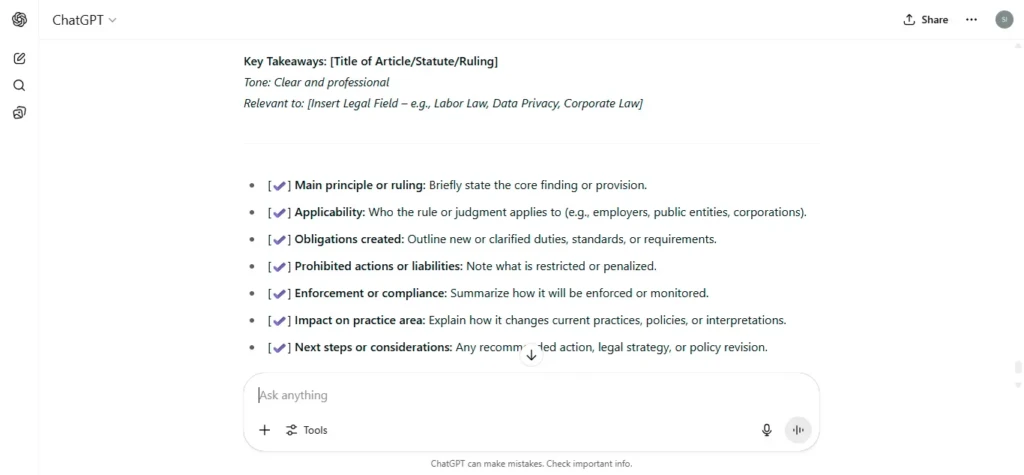
6. Draft a Client Intake Form or Questionnaire
#CONTEXT:
You need a structured intake form for new clients in your legal practice.
#GOAL:
Create a customizable form to collect client information.
#RESPONSE GUIDELINES:
Include sections for contact info, legal issue, background, and urgency.
Tailor for [insert legal practice area].
Keep the language [insert tone] and clear.
Include optional questions for context.
Format in sections with headings.
#OUTPUT:
A draft client intake form in Q&A format.7. Generate Legal Blog Post Ideas
#CONTEXT:
You run a legal blog or firm website and need content ideas relevant to your audience.
#GOAL:
Generate 5–10 blog topic ideas tailored to your legal field and clients.
#RESPONSE GUIDELINES:
Focus on [insert practice area or audience].
Mix FAQs, legal trends, and how-to topics.
Suggest catchy, SEO-friendly titles.
Keep tone [insert tone].
Make sure topics are current and practical.
#OUTPUT:
A list of blog post topics with optional titles.ChatGPT Output
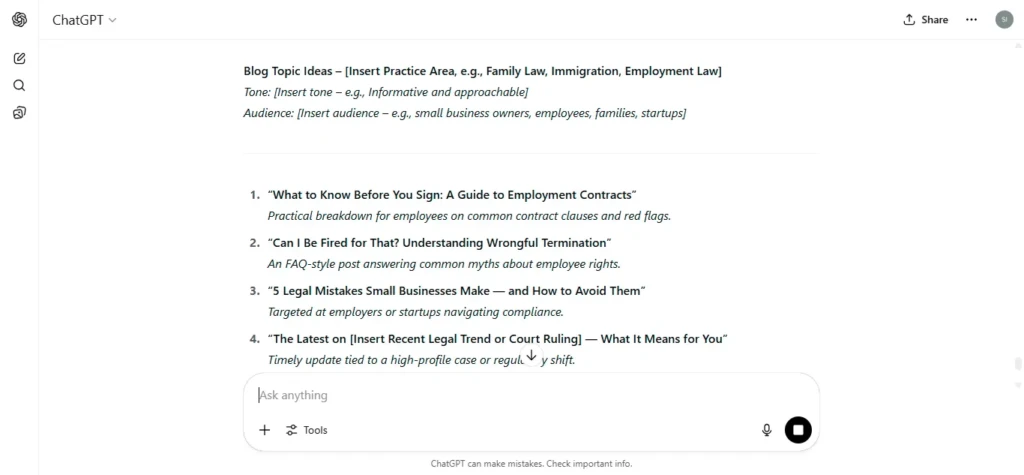
8. Prepare for a Legal Consultation Call
#CONTEXT:
You have an upcoming consultation and want to prepare a short briefing or checklist.
#GOAL:
Create a prep guide or question checklist for a client meeting.
#RESPONSE GUIDELINES:
Focus on [insert case type or issue].
Include 5–7 smart questions to ask the client.
Add 2–3 red flags to look for.
Use a [insert tone] tone.
Keep it concise.
#OUTPUT:
A consultation prep checklist for the lawyer.9. Convert Legal Notes Into a Structured Outline
#CONTEXT:
You’ve taken rough notes on a legal matter and want to turn them into a structured format.
#GOAL:
Reformat raw legal notes into a clear, organized outline.
#RESPONSE GUIDELINES:
Group notes by theme or issue.
Use headings and subheadings.
Keep the language [insert tone] and formal.
Remove repetition.
Highlight key facts, issues, and next steps.
#OUTPUT:
A clean, organized outline of legal notes.ChatGPT Output
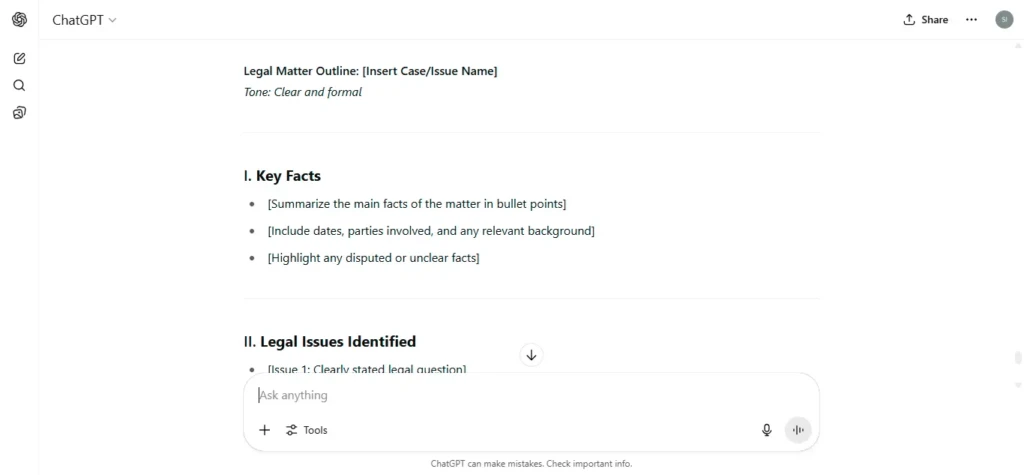
10. Identify Legal Risks in a Business Idea or Document
#CONTEXT:
You’re reviewing a business model, proposal, or document and want to spot potential legal risks.
#GOAL:
Highlight areas that may require legal caution or revision.
#RESPONSE GUIDELINES:
Ask for the type of business and document.
Flag compliance issues, liabilities, or unclear terms.
Keep tone [insert tone] and neutral.
Suggest ways to reduce or manage risk.
Avoid giving direct legal advice—just red flags.
#OUTPUT:
A list of potential legal risks with short explanations.How to Use These Prompts Effectively
Tailor each prompt with your practice area, tone, and jurisdiction for best results.
Use ChatGPT as a draft tool—always review output for accuracy and legal ethics.
Keep client info private. Never include confidential details in public AI tools.
Build templates from your best outputs for faster reuse.
Use the outputs for internal use, not as legal advice without human review.
Wrap-up
Legal professionals don’t have time to waste.
These ChatGPT prompts give you a head start on writing, reviewing, and communicating more effectively.
They’re not a replacement for legal expertise—but they make your workday smoother, faster, and more productive.
Pick one. Try it. And see how AI can work with you, not against you.

